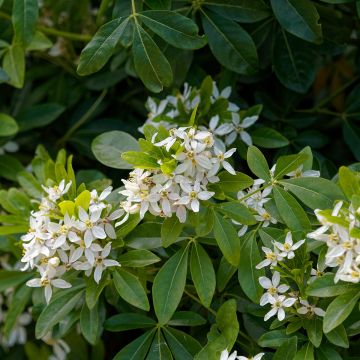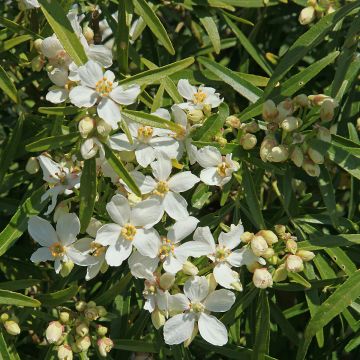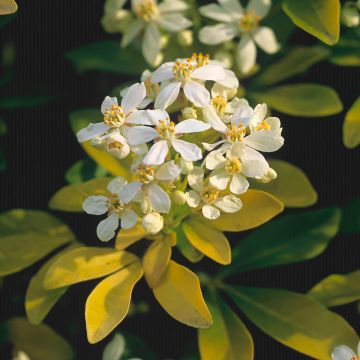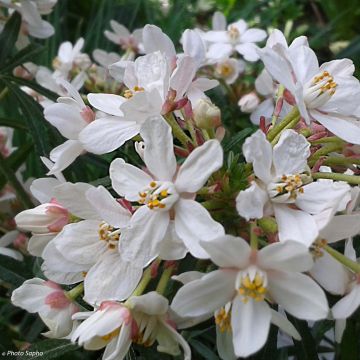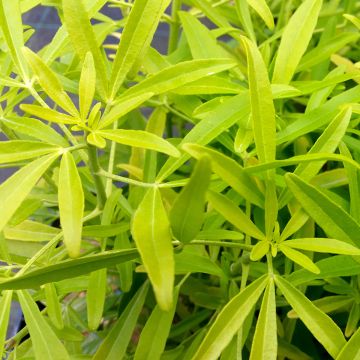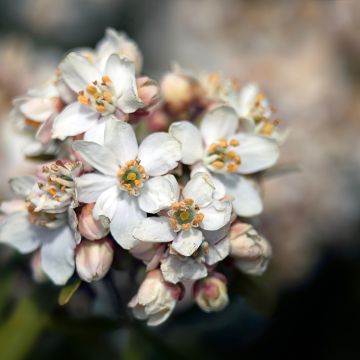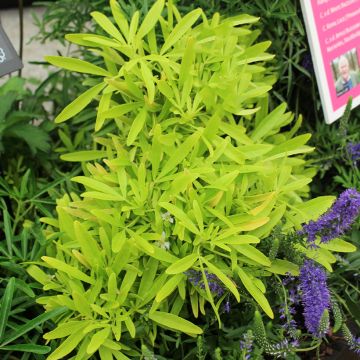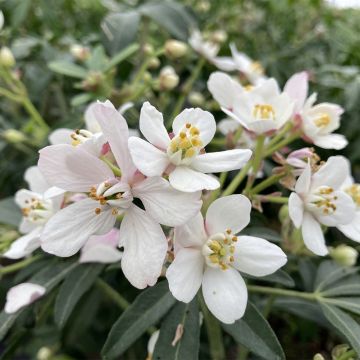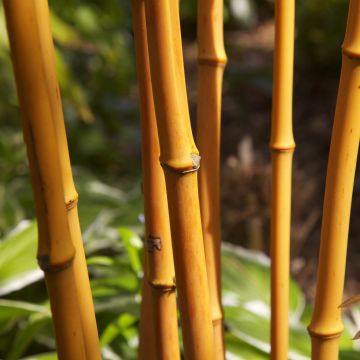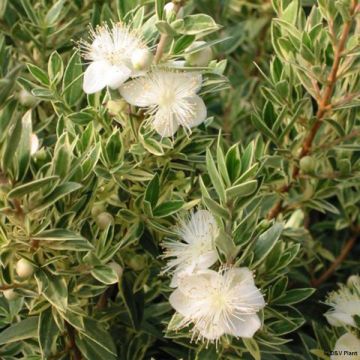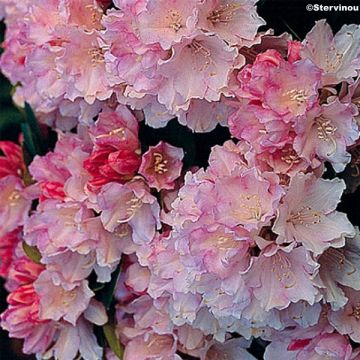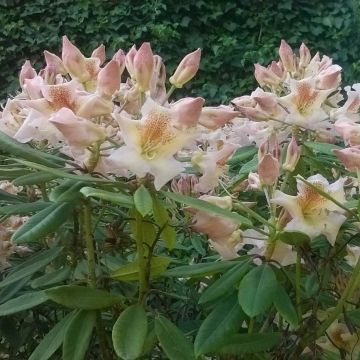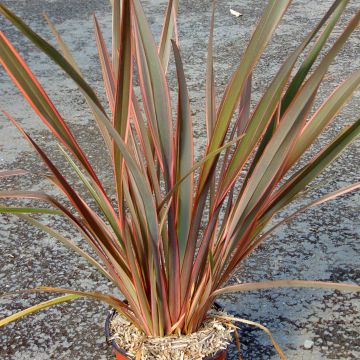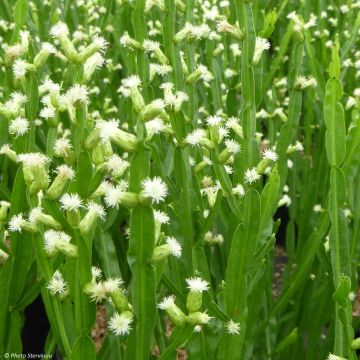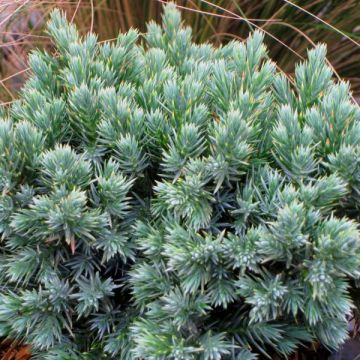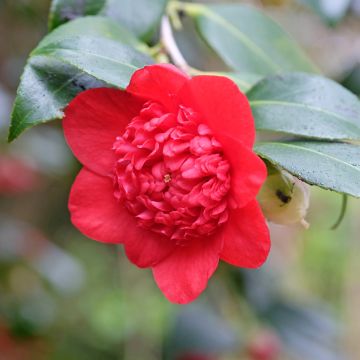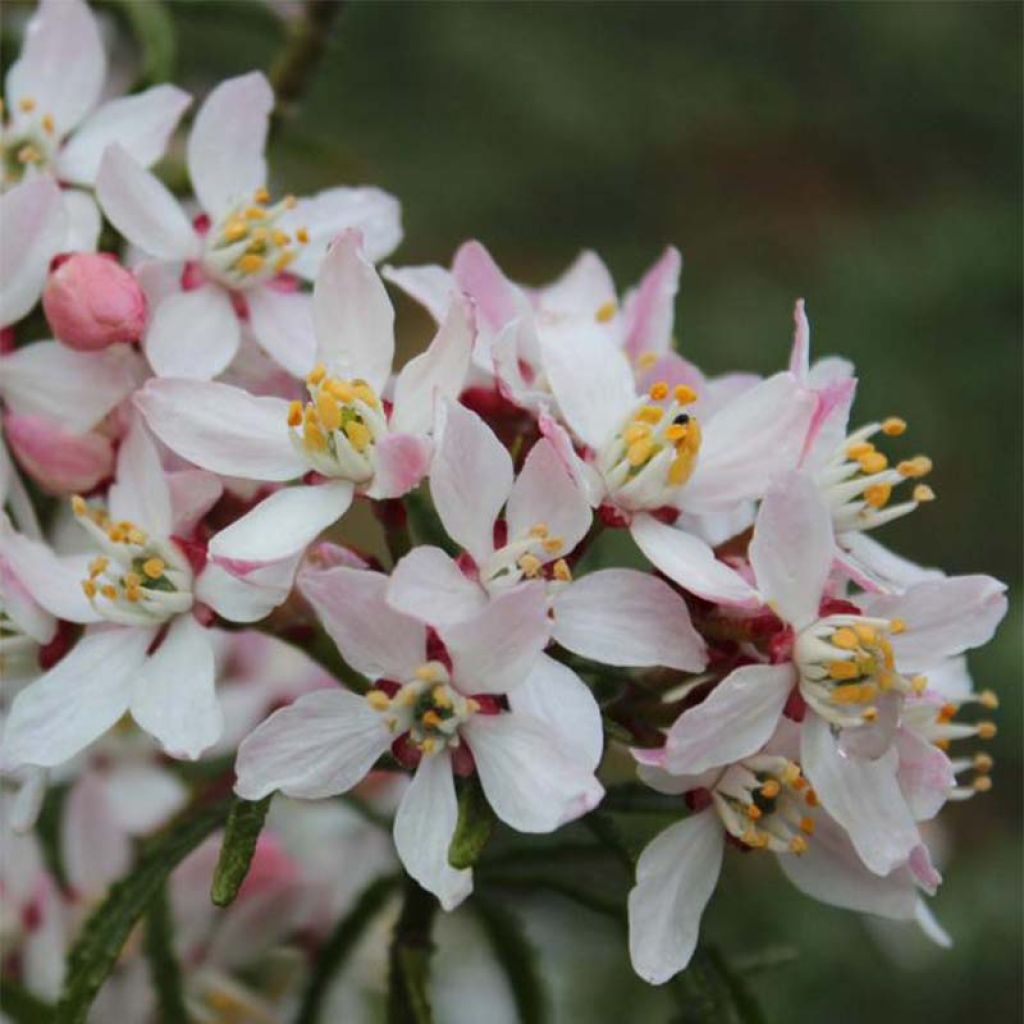

Choisya ternata Apple Blossom - Mexican Orange Blossom
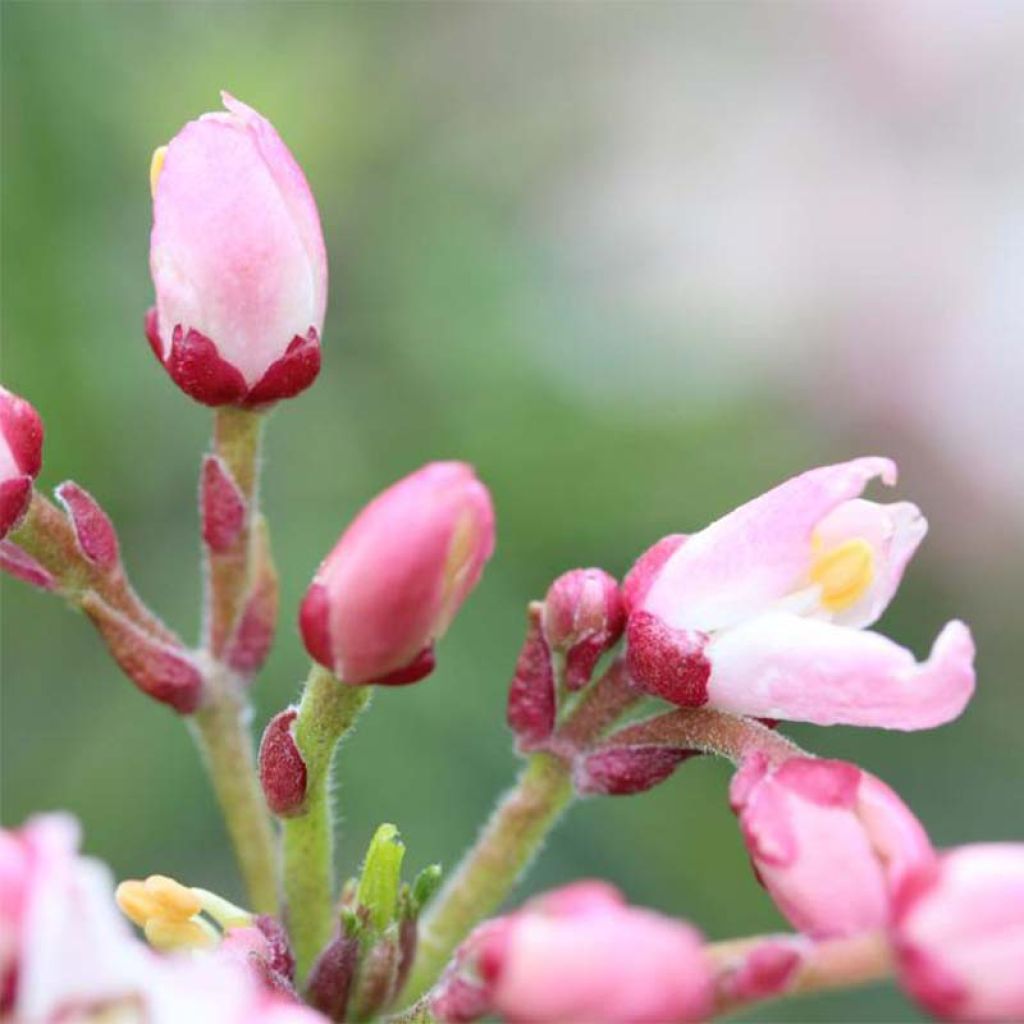

Choisya ternata Apple Blossom - Mexican Orange Blossom
Choisya ternata Apple Blossom - Mexican Orange Blossom
Choisya ternata Apple Blossom
Mexican Orange Blossom
Why not try an alternative variety in stock?
View all →This plant carries a 24 months recovery warranty
More information
We guarantee the quality of our plants for a full growing cycle, and will replace at our expense any plant that fails to recover under normal climatic and planting conditions.
From €5.90 for pickup delivery and €6.90 for home delivery
Express home delivery from €8.90.
Does this plant fit my garden?
Set up your Plantfit profile →
Description
Choisya Apple Blossom is a recent variety of Mexican Orange, which stands out for its distinctly pink-tinged bicolour flowering and its almost feathery foliage shaped into thin strips. Its small flowers, pink in buds, open into white corollas with pink reverses. They bloom abundantly in spring, sometimes in August-September, surrounded by the scent of orange blossom. The fragrance of the flowers, as well as the foliage when crushed, closely resembles that of citrus trees, as this plant belongs to the same botanical family. Choisya are excellent bushes for our gardens, both robust and drought-resistant, easy to grow in any well-drained soil and in all exposures in not too cold climates. This one, not very tall, infinitely delicate, is a real treasure for the garden or terrace.
Originating from Mexico, Choisya ternata, from which this new variety comes, belongs to the Rutaceae family, like citrus trees. The typical species, commonly known as Mexican Orange, is widespread in the mountains of Mexico, as well as in the southwest of the United States, from Arizona to Texas through New Mexico. This bush is accustomed to dry and hot climates, but its hardiness can sometimes be lacking north of the Loire, especially when young and planted in heavy soil.
Apple Blossom ('Pmoore09)', recently obtained in the United Kingdom, is a small bush that reaches an average height of 1.20m (3ft 11in) with a spread of 60cm at maturity. Its habit is bushy, rather rounded, and flexible. It bears evergreen leaves, opposite, divided into 3 or 5 very narrow leaflets, a very bright green, shiny, 6cm (2.4in) long and barely 1cm (0.4in) wide. When crushed, they release a fresh, citrusy and spicy scent, reminiscent of both orange leaf and green pepper. The flowering takes place in March-April, more or less early depending on the climate, and often continues into the second part of summer. At the tips of the branches, tight clusters of small star-shaped flowers with 5 petals appear. The white-pink flowers, with pink reverses, very fragrant, 3cm (1.2in) in diameter, are highly visited by pollinating insects.
The Apple Blossom Choisya, well-suited to Mediterranean climates, adapts well to colder climates in any light, flexible, well-drained soil and in a warm, sunny location protected from cold winds. It can be planted near an entrance or a pathway to enjoy its delicate fragrance as often as possible. It is also perfect on the terrace or balcony, planted in a large pot, but regularly fertilized and watered. It can also be used in the composition of a small free hedge, along with Escallonia, old roses, Abelia, or dwarf buddleias, for example. Despite its exotic appearance and fragrance, once established, it can withstand brief frosts of around -15°C (5 °F), as well as summer drought.
Report an error about the product description
Choisya ternata Apple Blossom - Mexican Orange Blossom in pictures
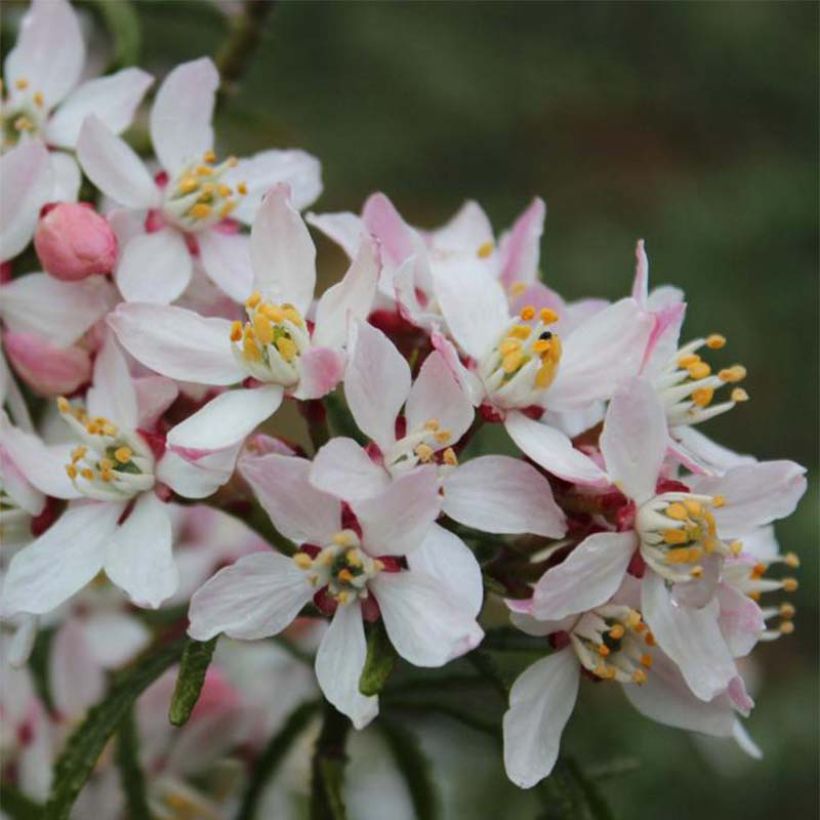

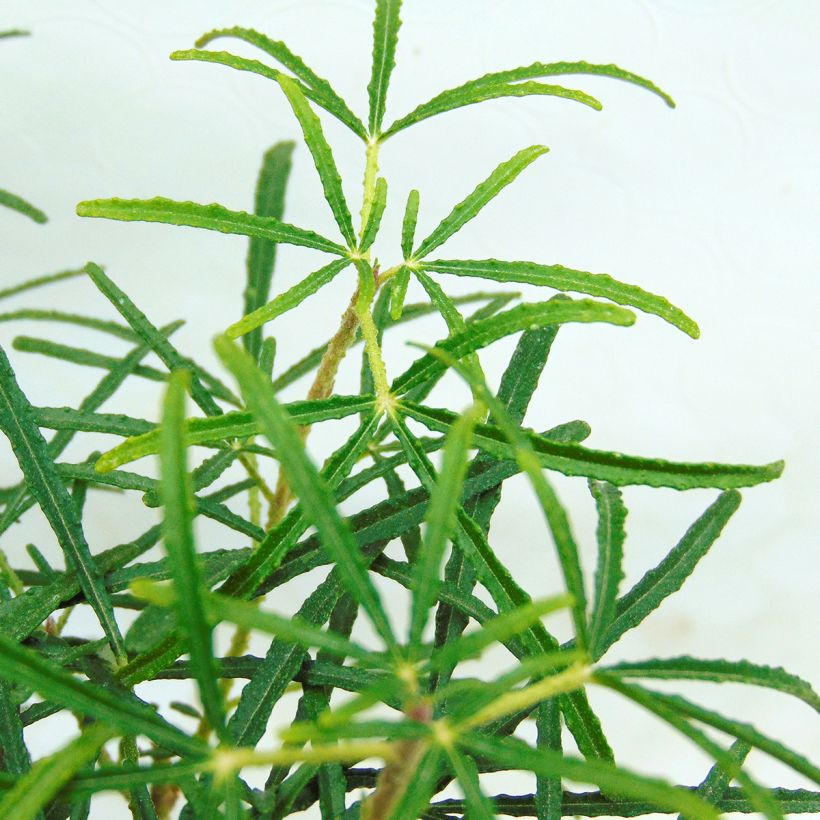

Plant habit
Flowering
Foliage
Botanical data
Choisya
ternata
Apple Blossom
Rutaceae
Mexican Orange Blossom
Cultivar or hybrid
Other Choisya - Mexican Orange Blossom
Planting and care
The Apple Blossom Mexican Orange Bush is preferably planted in spring in colder climates, and in early autumn in drier and hotter climates. It appreciates light, loose, well-drained soils. It tolerates the presence of limestone in the soil, but not in excess. Once established, after 2 or 3 years of cultivation, it can go without watering in summer, in all our regions. Resistant to -15°C (5 °F), it is quite sensitive during its early years, especially in heavy and humid soils: lighten your garden soil if necessary with a supply of river sand, gravel or volcanic ash: Choose a warm location, in full sun in cold regions, but rather in partial shade in our very sunny and dry regions. If it accepts growing in the shade, under trees, its habit will be looser and its flowering less abundant. Place it sheltered from cold winds, especially in our regions located north of the Loire. In summer, during the first years, water regularly if necessary to help the bush establish. Attention: the Mexican Orange Bush is sensitive to Phytophthora attacks, a fungus that attacks the plant's collar when the soil is both warm and permanently moist; consequently, in our hot regions, summer watering should be spaced out to allow the soil to dry between two abundant waterings. The Mexican Orange Bush is an easy-to-grow plant that tolerates competition from the roots of large trees. For a free hedge, plant one bush every 60 to 80cm (23.6 to 31.5in). On a terrace, plant it in a container at least 30cm (11.8in) deep and keep the substrate moist in summer.
Planting period
Intended location
Care
-
, onOrder confirmed
Reply from on Promesse de fleurs
Evergreen shrubs
Haven't found what you were looking for?
Hardiness is the lowest winter temperature a plant can endure without suffering serious damage or even dying. However, hardiness is affected by location (a sheltered area, such as a patio), protection (winter cover) and soil type (hardiness is improved by well-drained soil).

Photo Sharing Terms & Conditions
In order to encourage gardeners to interact and share their experiences, Promesse de fleurs offers various media enabling content to be uploaded onto its Site - in particular via the ‘Photo sharing’ module.
The User agrees to refrain from:
- Posting any content that is illegal, prejudicial, insulting, racist, inciteful to hatred, revisionist, contrary to public decency, that infringes on privacy or on the privacy rights of third parties, in particular the publicity rights of persons and goods, intellectual property rights, or the right to privacy.
- Submitting content on behalf of a third party;
- Impersonate the identity of a third party and/or publish any personal information about a third party;
In general, the User undertakes to refrain from any unethical behaviour.
All Content (in particular text, comments, files, images, photos, videos, creative works, etc.), which may be subject to property or intellectual property rights, image or other private rights, shall remain the property of the User, subject to the limited rights granted by the terms of the licence granted by Promesse de fleurs as stated below. Users are at liberty to publish or not to publish such Content on the Site, notably via the ‘Photo Sharing’ facility, and accept that this Content shall be made public and freely accessible, notably on the Internet.
Users further acknowledge, undertake to have ,and guarantee that they hold all necessary rights and permissions to publish such material on the Site, in particular with regard to the legislation in force pertaining to any privacy, property, intellectual property, image, or contractual rights, or rights of any other nature. By publishing such Content on the Site, Users acknowledge accepting full liability as publishers of the Content within the meaning of the law, and grant Promesse de fleurs, free of charge, an inclusive, worldwide licence for the said Content for the entire duration of its publication, including all reproduction, representation, up/downloading, displaying, performing, transmission, and storage rights.
Users also grant permission for their name to be linked to the Content and accept that this link may not always be made available.
By engaging in posting material, Users consent to their Content becoming automatically accessible on the Internet, in particular on other sites and/or blogs and/or web pages of the Promesse de fleurs site, including in particular social pages and the Promesse de fleurs catalogue.
Users may secure the removal of entrusted content free of charge by issuing a simple request via our contact form.
The flowering period indicated on our website applies to countries and regions located in USDA zone 8 (France, the United Kingdom, Ireland, the Netherlands, etc.)
It will vary according to where you live:
- In zones 9 to 10 (Italy, Spain, Greece, etc.), flowering will occur about 2 to 4 weeks earlier.
- In zones 6 to 7 (Germany, Poland, Slovenia, and lower mountainous regions), flowering will be delayed by 2 to 3 weeks.
- In zone 5 (Central Europe, Scandinavia), blooming will be delayed by 3 to 5 weeks.
In temperate climates, pruning of spring-flowering shrubs (forsythia, spireas, etc.) should be done just after flowering.
Pruning of summer-flowering shrubs (Indian Lilac, Perovskia, etc.) can be done in winter or spring.
In cold regions as well as with frost-sensitive plants, avoid pruning too early when severe frosts may still occur.
The planting period indicated on our website applies to countries and regions located in USDA zone 8 (France, United Kingdom, Ireland, Netherlands).
It will vary according to where you live:
- In Mediterranean zones (Marseille, Madrid, Milan, etc.), autumn and winter are the best planting periods.
- In continental zones (Strasbourg, Munich, Vienna, etc.), delay planting by 2 to 3 weeks in spring and bring it forward by 2 to 4 weeks in autumn.
- In mountainous regions (the Alps, Pyrenees, Carpathians, etc.), it is best to plant in late spring (May-June) or late summer (August-September).
The harvesting period indicated on our website applies to countries and regions in USDA zone 8 (France, England, Ireland, the Netherlands).
In colder areas (Scandinavia, Poland, Austria...) fruit and vegetable harvests are likely to be delayed by 3-4 weeks.
In warmer areas (Italy, Spain, Greece, etc.), harvesting will probably take place earlier, depending on weather conditions.
The sowing periods indicated on our website apply to countries and regions within USDA Zone 8 (France, UK, Ireland, Netherlands).
In colder areas (Scandinavia, Poland, Austria...), delay any outdoor sowing by 3-4 weeks, or sow under glass.
In warmer climes (Italy, Spain, Greece, etc.), bring outdoor sowing forward by a few weeks.

































